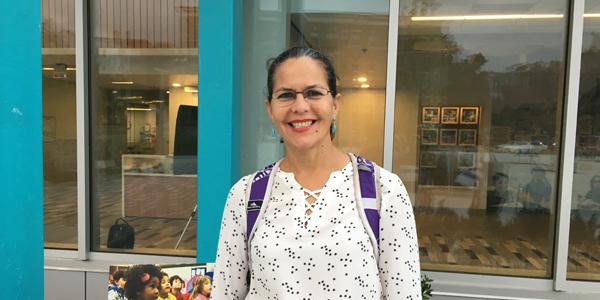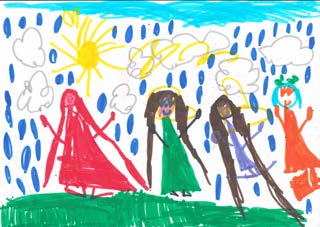NAEYC Member Spotlight: Margarita Marichal

You are here
For four years, Young Children has published Member Spotlight, a column that features NAEYC members’ exemplary work with and for young children. Our members represent all facets of the world of early childhood education: we are teachers, administrators, researchers, policymakers, family members, and advocates. Our members stories illustrate the different paths we have all taken to become part of the vibrant early childhood community and the NAEYC family. They also showcase how NAEYC members are carrying out the mission of promoting high-quality early learning for all children.
In my role as the chief strategy and innovation officer, one of my priorities is member engagement. I will be working to gather and share our members’ stories in upcoming issues of Young Children. There is no better way to see the impact of high-quality early learning than through the eyes of our members. I invite you to reach out to share your story with me!
—Michelle Kang
Margarita Marichal has experienced many different kinds of classrooms and approaches to early childhood education during her career. She began to notice a pattern, though, in some of the early childhood classrooms she worked in: there seemed to be a lack of emphasis on child-led play and also on creativity and the arts. Seeking answers as to why that could be, Margarita discovered new ways of integrating play and approaching creativity and self-expression to promote resilience and be responsive to the effects of trauma.
Play should be an integral part of learning.
After finishing her master’s degree at the University of Houston’s Children’s Learning Centers, she returned to Puerto Rico to work as a physical education instructor at the Universidad Interamericana. She was later approached about offering a course on play for prekindergarten to sixth-grade students, and it became clear that, too often, play was relegated to the physical domain and physical education. Recognizing this, she delved into the research and learned that, “From play, we can achieve all the other developmental aspects of early childhood education, especially with free play. Even social and emotional development can be achieved through play.” Especially as children get older and play is emphasized less and less, Margarita noticed that it can still be developmentally beneficial, especially in supporting content knowledge. “We should facilitate children’s play through exploring their environment,” she says, clarifying that play should not be a supplement to children’s learning but an integral part of lessons.
After years of teaching early childhood courses at the Universidad Interamericana and becoming an active member of both NAEYC and PRAEYC, Margarita earned her doctoral degree in education with a specialization in early childhood education. Her doctoral work involved doing more in-depth research about play and the effects of certain traumas on young children. At the same time, she continued to explore ways in which arts-embedded activities can help foster children’s self-expression and well-being.
Art can nurture emotional well-being and also align with standards.
With this knowledge, Margarita now divides her time between the Universidad Interamericana and volunteering in her community. Based on her work in both settings, she says, “I have seen the difference in children who come from marginalized environments and those who do not,” and she emphasizes just how much work remains to be done in achieving equity and diversity, especially as communities react to traumatic events such as natural disasters and the COVID-19 global pandemic. From her perspective, this is where play and the arts really hold power.
 “At least once a week, I go to a refugee camp or school to train Head Start and elementary teachers on how they can fulfill curriculum competencies through the healing properties of art and also play,” she explains. “It’s hard for children to express how they feel in words, so that’s why we do it through art.” Art can be used in the wake of traumatic events to nurture social and emotional well-being and can also align with curriculum standards. Even activities as simple as self-portraits, Margarita notes, can be powerful ways for children to share their inner thoughts: “You can see from their expressions in their self-portraits all the things that they can show through art. It’s a kind of catharsis.
“At least once a week, I go to a refugee camp or school to train Head Start and elementary teachers on how they can fulfill curriculum competencies through the healing properties of art and also play,” she explains. “It’s hard for children to express how they feel in words, so that’s why we do it through art.” Art can be used in the wake of traumatic events to nurture social and emotional well-being and can also align with curriculum standards. Even activities as simple as self-portraits, Margarita notes, can be powerful ways for children to share their inner thoughts: “You can see from their expressions in their self-portraits all the things that they can show through art. It’s a kind of catharsis.
She herself is a self-taught artist and appreciates the benefits of creativity, seeing how art can be healing not only for children, but also for teachers who are quietly dealing with traumatic events that have affected their communities.As Margarita says, “The healing power of art and play does not recognize chronological age.”
SHARE YOUR STORY. Answer a few questions to tell us about your work with young children and what NAEYC membership means to you.
NOMINATE A MEMBER. Share why an NAEYC member you know should be recognized for their work with young children.
Photo courtesy of Margarita Marichal